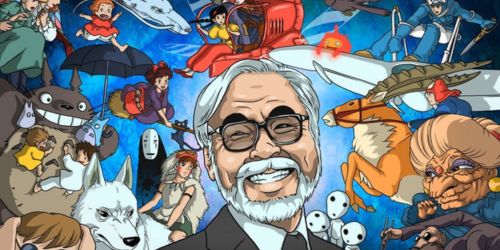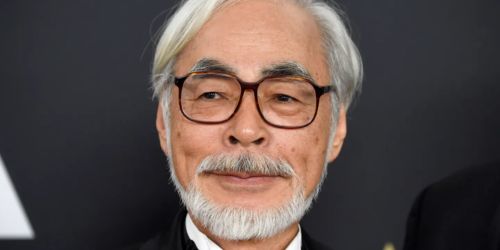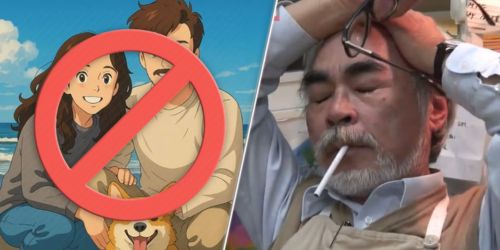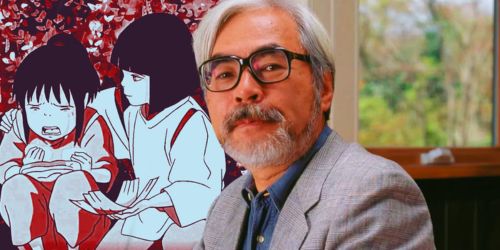Ghibli Art is more than just animation; it is an experience. Whether you are watching Spirited Away, My Neighbor Totoro, or Howl’s Moving Castle, you are immediately drawn into a world where every detail, color, and texture tells a story. Studio Ghibli has mastered the art of blending fantasy with realism, making their films visually enchanting and emotionally moving.
In this blog, we will explore everything about Ghibli Studio, from its unique Studio Ghibli art style to its influence on modern animation. We will also take a deep dive into the history of this art, how it evolved, and why it remains so popular. Whether you are a long-time Ghibli fan or new to the magical world of Studio Ghibli , this article will give you a deep understanding of why Ghibli’s visual storytelling is so special.
The History of Ghibli Art
Studio Ghibli was founded in 1985 by Hayao Miyazaki, Isao Takahata, and Toshio Suzuki. Before forming the studio, Miyazaki and Takahata worked on various animated projects, including Nausicaä of the Valley of the Wind (1984), which showcased early elements of the Ghibli art style.
From the beginning, Studio Ghibli set itself apart from other animation studios by focusing on hand-drawn animation, rich storytelling, and deeply immersive backgrounds. The first official Ghibli film, Laputa: Castle in the Sky (1986), introduced many of the studio’s signature visual techniques, such as detailed landscapes, fluid character movements, and atmospheric lighting.

Over the years, Studio Ghibli has continued to evolve, with films like My Neighbor Totoro (1988), Princess Mononoke (1997), and Spirited Away (2001) setting new artistic benchmarks in animation. The studio remains dedicated to traditional hand-drawn techniques, even as digital animation becomes more common.
Early Influences on Studio Ghibli.
This is heavily influenced by classic Japanese and European art styles. Miyazaki has often cited the works of European illustrators and animation studios, such as French animator Paul Grimault and Russian folklore-inspired art, as inspirations for Ghibli’s unique visual storytelling.
Additionally, traditional Japanese ink paintings and ukiyo-e (woodblock prints) have influenced Ghibli Concept Art, particularly in films like The Tale of the Princess Kaguya (2013). These influences give Ghibli’s artwork its distinctive combination of delicate brushwork, expressive characters, and immersive landscapes.
The Unique Style of Studio Ghibli
1. Hand-painted backgrounds and Rich Details
One of the key elements of Studio Ghibli is its breathtaking hand-painted backgrounds. Unlike digital animation, which often relies on 3D rendering, Ghibli maintains a traditional approach by painting each scene meticulously. This technique adds warmth, depth, and a dreamlike quality to their films.

For example, the Ghibli background art in Spirited Away transports you to a surreal bathhouse filled with spirits, while the Studio Ghibli background art in Princess Mononoke brings the mystical forest to life. These detailed backgrounds enhance the storytelling and create an immersive experience for the viewers.
2. Soft Color Palettes and Lighting
Ghibli films use a soft and natural color palette, often inspired by Japanese and European landscapes. The use of lighting is also subtle but effective, creating an atmosphere that feels real and lived-in. The warm tones of Studio Ghibli Wall Art and the pastel shades in Ghibli Concept Art add to the aesthetic appeal of these films.
3. Expressive Character Designs
The characters in Ghibli films are designed with simplicity but depth. Their eyes, in particular, play a significant role in conveying emotions. Whether it’s Chihiro’s transformation in Spirited Away or Sophie’s journey in Howl’s Moving Castle, their expressions tell a powerful story.
Ghibli also focuses on natural movements. Unlike mainstream animation, which can sometimes feel exaggerated, Ghibli studio art captures the small, everyday gestures—like fidgeting with clothes, adjusting hair, or breathing deeply—making the characters feel incredibly real.

4. The Role of Nature in Ghibli Art
Nature plays a crucial role in Ghibli’s visual storytelling. Lush green forests, expansive skies, and flowing water are often central to the setting of Ghibli films. This connection to nature is evident in Studio Ghibli landscape art, particularly in films like My Neighbor Totoro and Nausicaä of the Valley of the Wind.

Notable Ghibli Films & Their Artistic Influence
a. Spirited Away (2001)
- Features a vibrant mix of Japanese folklore and fantasy elements.
- The bathhouse setting is rich in detail, inspired by traditional ryokans (Japanese inns).
b. My Neighbor Totoro (1988)
- Captures the lush countryside of Japan with soft, warm colors.
- The creatures, like Totoro, are designed with a mix of simplicity and charm.
c. Princess Mononoke (1997)
- Darker, more intricate designs, inspired by ancient Japanese myths.
- Features vast landscapes and rich depictions of nature, forests, and spirits.
d. Howl’s Moving Castle (2004)
- Inspired by European steampunk aesthetics with floating castles and intricate machinery.
- A mix of fantasy and realism creates a unique, magical atmosphere.
e. The Wind Rises (2013)
- More grounded in realism, inspired by early 20th-century Japan.
- Beautifully detailed depictions of aviation and technology.
Animation Techniques Used by Studio Ghibli Art
a. Traditional Hand-Drawn Animation
Ghibli continues to use hand-drawn animation instead of CGI, preserving its unique, organic style.
b. Layering for Depth
By layering different elements in a scene, Ghibli creates a sense of depth and movement, making its world feel three-dimensional.
c. Fluid Character Animation
Ghibli pays special attention to human movements—characters fidget, breathe, and react in subtle ways, making them feel alive.
d. Use of Negative Space
Silence and still moments are as important as action in Ghibli films, allowing emotions to settle and making the scenes feel more profound.
Influence of Ghibli Art on Modern Media
- Many modern anime and animation studios take inspiration from Ghibli’s detailed backgrounds and warm color palettes.
- Video games like Ni no Kuni and The Legend of Zelda: Breath of the Wild show strong Ghibli-style influences.
- Ghibli’s emphasis on nature, emotion, and everyday beauty has shaped how animated storytelling is approached worldwide.
Studio Ghibli Influence on Art and Animation
1. Impact on the Art Industry
Ghibli’s work has inspired countless artists worldwide. Many Ghibli art books, including The Art of Studio Ghibli, showcase the intricate process behind each film. These books have become essential reading for aspiring animators and illustrators.
The popularity of Ghibli Prints and Studio Ghibli art books also speaks to how deeply fans appreciate the visual storytelling of Ghibli. Whether it’s a Ghibli wall art piece in a home or a Studio Ghibli art book on an artist’s desk, Ghibli’s influence is everywhere.
2. Ghibli Art in Digital Media
With the rise of AI and digital art, we are now seeing AI-generated Ghibli art, which attempts to replicate the magic of traditional Studio Ghibli Style Art. From Ghibli pixel art to Ghibli AI art generators, digital artists are exploring new ways to bring Ghibli’s signature style into the modern world.
Additionally, games like Ni no Kuni and Zelda: Breath of the Wild show clear inspiration from Ghibli concept art, further proving the studio’s lasting impact on digital entertainment.
The Ghibli Art Merchandise and Collectibles
Ghibli’s artistic influence extends beyond films. There is a wide range of Studio Ghibli prints, Ghibli canvas art, and Ghibli poster art available for fans to bring a piece of their favorite films into their homes.
For collectors, items like the Ghibli Crystal Jigsaw Puzzle and Art Crystal Jigsaw Studio Ghibli provide a fun and artistic way to engage with Ghibli’s world. Fans also love exploring Ghibli museum art books, which offer a behind-the-scenes look at the creative process behind these masterpieces.
How to Create Ghibli-Inspired Art
If you’re an artist looking to recreate Studio Ghibli Style , here are some tips:
Study Ghibli’s Backgrounds – Look at Studio Ghibli background art to understand how they use colors and depth.
Use Soft and Natural Colors – Avoid harsh contrasts and use a pastel-like palette.
Focus on Details – Ghibli’s magic lies in the small details like raindrops on leaves or steam rising from food.
Create Emotion Through Characters – Let their eyes and subtle movements convey their emotions naturally.
Experiment with AI Tools – If you’re into digital art, try using a Ghibli AI art generator to get inspiration for your pieces.
If you’re looking for Ghibli pictures, you can check out:
- Studio Ghibli Official Website (they often showcase official artwork).
- Ghibli Art Books (The Art of Spirited Away, The Art of Howl’s Moving Castle, etc.).
- Pinterest (many fans upload high-quality images of Ghibli backgrounds and character designs).
- DeviantArt & ArtStation (great sources for fan art inspired by Studio Ghibli).
- Ghibli Museum Website (for exclusive behind-the-scenes concept art).
Conclusion
Studio Ghibli is a celebration of beauty, detail, and emotion. From breathtaking Studio Ghibli background art to expressive character designs, every frame is a masterpiece. Whether you love collecting Studio Ghibli Prints or creating your own Ghibli-inspired art, the impact of Studio Ghibli is undeniable. For more information visit kalaspot.com







